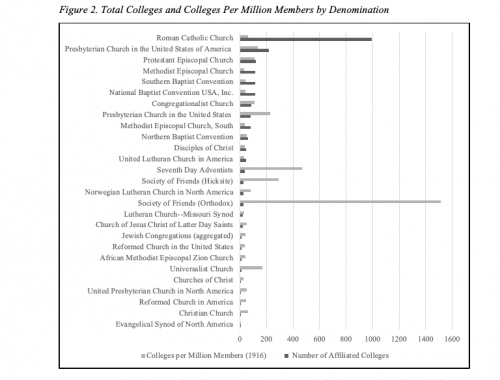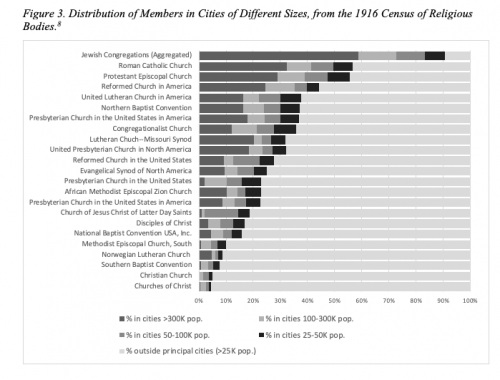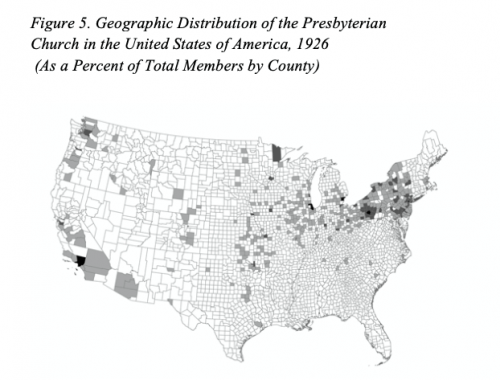 More than a century ago, the US government expended significant resources documenting the financial, material, and human resources of all of the religious organizations in the country—ultimately detailing data on more than 200 denominations, and 220,000 congregations. Known as the Census of Religious Bodies (or CRBs), these incredible sources of historical data were gathered in 1906, 1916, 1926 and 1936. Although scholars have long relied on denominational membership numbers pulled from these volumes, the vast majority of the rich data in these extensive volumes has remained inaccessible to scholars and the general public.
More than a century ago, the US government expended significant resources documenting the financial, material, and human resources of all of the religious organizations in the country—ultimately detailing data on more than 200 denominations, and 220,000 congregations. Known as the Census of Religious Bodies (or CRBs), these incredible sources of historical data were gathered in 1906, 1916, 1926 and 1936. Although scholars have long relied on denominational membership numbers pulled from these volumes, the vast majority of the rich data in these extensive volumes has remained inaccessible to scholars and the general public.
Thanks to a generous grant from the University Research Foundation at the University of Pennsylvania, I have been able to begin data entry of the 1916 Census. I am currently seeking funding for research assistance to enter, clean and analyze the 1906, 1926 and 1936 Censuses, with the goal of making them publicly available (on the American Religious Data Archive.)
The data in the CRBs will allow scholars to answer an incredible number of questions associated with not just religion, but with social reproduction more generally, and do so for almost the entire US population – with its incredible religious diversity. For example, to what extent is wealth crucial to the long-term survival of a groups’ advantages? How much do investments in material resources, such as buildings, matter, versus investments in higher education (which our preliminary analysis of the CRBs demonstrates is highly varied, even among wealthy denominations)? What about investments that are strictly oriented toward growth?
The CRBs have detailed data on endowments, expenditures on denominational colleges and universities, and investments in both domestic and foreign missions, charities, and primary and secondary schools, to name just a few. And, more importantly, they have data on all of these variables for all of the religious groups in the country in the early part of the Twentieth Century. The CRBs thus present untapped data on the resources and activities of groups for whom reliable data is often elusive, including one of the most important institutions in Jim Crow America: the Black Church, as well as myriad ethnic groups that immigrated to the US prior to immigration restrictions.
What we can do with this data:
Finally, the detailed geographic data that is available in the CRBs will allow scholars to examine how all of these factors varied by region, between rural versus urban areas, between the north and the south, and by different levels of immigration – to name just a few of the potential analyses connected to long-term differences in inequality that the CRBs will facilitate.
The data contained in the Censuses of Religious Bodies has the potential to spur research into social stratification in an understudied set of American institutions. While the past 50 years have produced robust theoretical literatures on processes of social reproduction in families and educational institutions (Davies and Rizk 2018), few sociologists of religion have entered these debates (c.f. Pyle & Davidson 2014:195). This project will hopefully change that.







